The season hasn't even started yet, nor do we have an AP Top 25 for 2019-20. Yet here I am, ready to poke holes in the hype and spot weaknesses with even the nation's best teams. Let's talk about opportunities for improvement.
Sure, that might make me a buzzkill if I'm talking about your team, but, hey, I'm also here with "good bad news" about that archrival of yours.
For our population of ranked teams in the absence of, well, ranked teams, we will turn to my colleague Jeff Borzello and his authoritative "way too early top 25." Jeff has capably defined the group that, heading into the season, should be the nation's elite for 2019-20.
Here's the biggest problem I see with every top-25 team:

1. Michigan State Spartans
Problem: So-so defensive rebounding
Thank you, Tom Izzo. Bringing back Cassius Winston, Xavier Tillman and, reportedly, a healthy Joshua Langford from last season makes forecasting that much easier. What will we see from MSU this season? Possibly a fair approximation of the 2019 Final Four Spartans. That would mean Winston and his mates will again excel at putting the ball in the basket (particularly inside the arc) and at forcing opponents to miss their shots.
The downside of a repeat performance, however, would be another below-average (in Big Ten terms) showing on the defensive glass. Pulling down 69.8% of your conference opponents' misses when the league average is 71.4 isn't necessarily terrible, but the Spartans' three-game losing streak spanning last January and February coincided with a stretch of downright anemic defensive rebounding. It's something Izzo will want to watch.
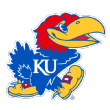
2. Kansas Jayhawks
Problem: Turnovers
KU played the balance of last season without Udoka Azubuike, and now the 7-foot senior is healthy and ready to resume his insanely accurate scoring ways. (Google: "Azubuike 77%.") That fact alone figures to lift the Jayhawks' performance on both sides of the ball in 2019-20, but how much this team improves on offense will depend in part on how often it gives the ball away. Last season, Kansas committed a turnover on one in every five Big 12 possessions, giving Bill Self's team the second-worst mark in the league.
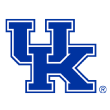
3. Kentucky Wildcats
Problem: Perimeter scoring
Freshman Johnny Juzang is being touted as the next Tyler Herro, bearing in mind a year ago at this time few observers expected Herro to blossom into a one-and-done lottery pick. If Juzang does indeed keep opposing defenses honest by hitting 3s, that will give the UK offense a welcome degree of spacing. If not, however, perimeter scoring could be a problem. The only player on this roster to average at least one made 3 per game in a college season is 6-foot-9 Bucknell transfer Nate Sestina.
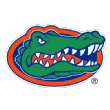
4. Florida Gators
Problem: Expectations
Mike White's recruiting at both the high school and college levels has been outstanding the past two years. Now his roster is brimming with elite sophomores (Keyontae Johnson, Andrew Nembhard, Noah Locke) and distinguished freshmen (Scottie Lewis, Tre Mann, Omar Payne), not to mention possibly the nation's top grad transfer in Kerry Blackshear. But is a poor-shooting team that carried a No. 10 seed in the 2019 NCAA tournament really going to cruise into the 2020 Final Four? Possibly, sure, but if the Gators are smart, they'll work to earn the hype before they believe it.
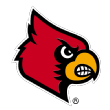
5. Louisville Cardinals
Problem: Opponent possessions ending in a shot
Last season ACC opponents posted a lower turnover rate (17%) than the Cardinals (18.5%). That mattered, because Chris Mack's team was good at just about everything else. In fact, in a turnover-neutral world, Louisville last year would have been about as good as (real-world) Duke. The Cards don't have to press full-court on every possession, of course, but even a slight uptick in opponent turnovers could yield big dividends.

6. Duke Blue Devils
Problem: Interior D
It got lost in all the Zion mania (rightly), but last season Duke posted its best number for defensive block percentage in the 23 seasons for which kenpom.com has data. Blue Devil opponents this season, by contrast, should see fewer of their shots being swatted away. True, Javin DeLaurier's been known to block an occasional shot and freshman Vernon Carey is, like DeLaurier, listed at 6-foot-10. Nevertheless, the senior may play limited minutes, and the freshman's rim defense is reportedly a work in progress.

7. Oregon Ducks
Problem: Frontcourt learning curve
Payton Pritchard and Will Richardson return for Dana Altman, but the relatively surprising departure of Kenny Wooten alongside the expected losses of Bol Bol and Paul White created something of a blank slate in the Oregon frontcourt. This season Francis Okoro will team with new arrivals like freshmen C.J. Walker and N'Faly Dante and UNLV transfer Shakur Juiston.
Freshman point guard Cole Anthony puts on a show for Tar Heels fans at North Carolina's "Late Night with Roy" event.
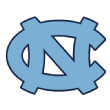
8. North Carolina Tar Heels
Problem: Really having to learn on the fly
Cole Anthony is projected as a top-five pick in the 2020 NBA draft, but for the time being he's a member of a UNC roster that just bid farewell to its top five scorers. Garrison Brooks and Sterling Manley qualify as old-timers now, and Charleston Southern transfer Christian Keeling is already earning favorable preseason reviews. In short, this is the most inexperienced team Roy Williams has had in Chapel Hill in a long while.

9. Gonzaga Bulldogs
Problem: Having to learn on the fly
From the opening tip of the 2019 round of 32 right up to the final horn of Gonzaga's loss to Texas Tech in the Elite Eight, Mark Few went exclusively with an eight-man rotation. Of those eight players, just two return for 2019-20: Killian Tillie and Corey Kispert. To be sure, big things are expected of Filip Petrusev, Joel Ayayi looked fantastic for France in the FIBA U19 World Cup and transfers Admon Gilder (Texas A&M) and Ryan Woolridge (North Texas) will give Few's backcourt rotation an instant veteran feel. If all of the above learn how to play together sooner rather than later, this can be another vintage Bulldog team.
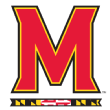
10. Maryland Terrapins
Problem: Severe deficit in scoring opportunities
Among major-conference programs that played in the 2019 NCAA tournament, no team came within a mile of the Terrapins last season in terms of giving your opponents more chances to score than you give yourself. Watch the turnovers by both teams in Maryland games this season. If those two numbers are even close to equal on enough occasions, a No. 10 ranking may be too low for Anthony Cowan, Jalen Smith and their mates.
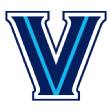
11. Villanova Wildcats
Problem: Making 2s
For years the Wildcats have been an extremely perimeter-oriented team that upon closer examination actually excels at making its 2s. Now Jay Wright will have to carry that torch without his two leading scorers (by far) inside the arc last season, Eric Paschall and Phil Booth. Recent history suggests someone will step up to this plate, be it Collin Gillespie, Jermaine Samuels or possibly a heralded freshman like Jeremiah Robinson-Earl.
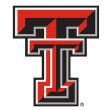
12. Texas Tech Red Raiders
Problem: Huge defensive shoes to fill
It's a new day in Lubbock. Not only is this now a program and a head coach that came within 14 seconds of a national title, it's also a roster that returns just Davide Moretti and Kyler Edwards from said national championship game. Optimists among the Red Raider faithful will point out that this team also looked very young at this time last year. True enough. If another Jarrett Culver emerges from this year's group, who knows?
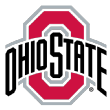
13. Ohio State Buckeyes
Problem: Points
When last we saw the Buckeyes, they were not particularly accurate in their shooting, and they did not take especially good care of the ball. Put those two dynamics together, and you're looking at an offense that produced 0.98 points per possession in Big Ten play, good for No. 13 in a 14-team league. To live up to a No. 13 ranking nationally, Kaleb Wesson, Florida State transfer CJ Walker and company will have to achieve loftier goals than statistical bragging rights over Northwestern.
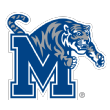
14. Memphis Tigers
Problem: Perimeter karma
The Tigers may be due for a slight correction from the hoops gods. It's not often you shoot 31.8% on your 3s and come away from the conference season having done better in that category than your opponents, but that's precisely what Penny Hardaway's men accomplished in 2018-19. Believe everything you hear about James Wiseman and Precious Achiuwa, and also know that the AAC might do better than 30% from beyond the arc against Memphis this season.

15. Seton Hall Pirates
Problem: Offense
Seton Hall was actually outscored in Big East play last season. Myles Powell is outstanding, but as a team the Pirates were turnover-prone and connected on just 32% of their 3s against conference foes. Still, good things do happen for SHU when Powell has the ball inside the arc. If anything, his already heavy workload might increase this season.

16. Virginia Cavaliers
Problem: Unanticipated attrition
There is no downside to winning a national championship, of course, but the Tony Bennett of a year ago would be surprised to learn he's facing 2019-20 without both Kyle Guy and Ty Jerome. Now the Cavaliers will have to develop two or three featured scorers among a rotation made up entirely of new arrivals and veterans who've been supporting players thus far.
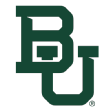
17. Baylor Bears
Problem: Fouls
Last season marked the first time in five years that a team not named "West Virginia" posted the highest number for opponent free throw rate in Big 12 play. That team was Baylor, and the Bears' frequent fouling represented a gift to conference opponents who were otherwise being outscored by a healthy margin when the clock was running.
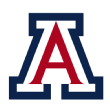
18. Arizona Wildcats
Problem: Misses inside the arc
Where have you gone, Derrick Williams? Arizona made less than 45% of its 2s in Pac-12 play last season, giving the Wildcats their worst such number by far of the Sean Miller era. Conversely, Chase Jeter, he of the 53% shooting inside the arc in conference play, was a rare beacon of relative accuracy. Between Jeter and ESPN top-10 freshmen Josh Green and Nico Mannion, Miller will have options as he seeks a 2-point renaissance.

19. Utah State Aggies
Problem: Timing
Utah State had a chance to record its first NCAA tournament win in 18 years last March. Alas, the Aggies picked that particular moment to post one of their worst games on offense of the entire season in a 78-61 loss to Washington. Give full credit to the Huskies and their zone D, surely, but USU did not show its best carpe-diem look losing by double digits to an opponent that then lost by double digits to an opponent (North Carolina) that then lost by double digits (to Auburn).

20. Xavier Musketeers
Problem: Defense
Can an extremely low foul rate be too much of a good thing? Musketeer opponents hardly ever went to the line in conference play last season, and, seen in isolation, that's a desirable outcome. Then again, those same opponents hardly ever committed a turnover, either, and the sheer number of attempts Xavier allowed from the field in Big East play dropped this otherwise respectable defense to the league's bottom half.

21. Saint Mary's Gaels
Problem: History
The Gaels have played in two consecutive NCAA tournaments just once in program history, in 2012 and 2013. Now, after SMC's 60-47 thrashing of Gonzaga in the 2019 WCC tournament title game, Randy Bennett's men have an excellent chance to hear their name called on a second Selection Sunday in a row. Bennett brings back four starters and adds a now-healthy 7-foot-3 Aaron Menzies.

22. Marquette Golden Eagles
Problem: Shot volume
No team shot more accurately from the field in Big East play last season than Markus Howard and Marquette, yet the Golden Eagles' bottom-line figure of 1.08 points per possession was no match for the 1.14 Villanova recorded. The difference was due mostly to turnovers, though a few more offensive boards in Milwaukee wouldn't hurt, either.

23. Washington Huskies
Problem: Narrow window of opportunity
Freshmen Isaiah Stewart and Jaden McDaniels are ranked Nos. 3 and 7, respectively, in the 2019 ESPN 100. Players at that level tend to leave the college ranks rather quickly, so Mike Hopkins will want to seize this brief moment where his freshmen, Kentucky transfer Quade Green and returnees Nahziah Carter and Hameir Wright are all on the same roster.
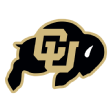
24. Colorado Buffaloes
Problem: Keeping the analytic faith
On paper Colorado is excellent at the free throw line and terrible beyond the arc. That combination isn't supposed to happen, or, if it does, it's not supposed to persist. So never mind that 31.9% success rate on 3s last year, Shane Gatling. Fire away from deep, sir, knowing the book says an 82% shooter at the line like you "should" be seeing better results from distance. Same goes for D'Shawn Schwartz -- consider this your green light.

25. LSU Tigers
Problem: The other shoe dropping
There could be an NCAA notice of allegations in this men's basketball program's future. In theory, a team with veterans like Javonte Smart, Skylar Mays, Marlon Taylor and Emmitt Williams and a freshman like Trendon Watford is top-25 material. In practice, however, the only thing more detrimental to this program than continuing uncertainty might be the unwelcome arrival of certainty.
